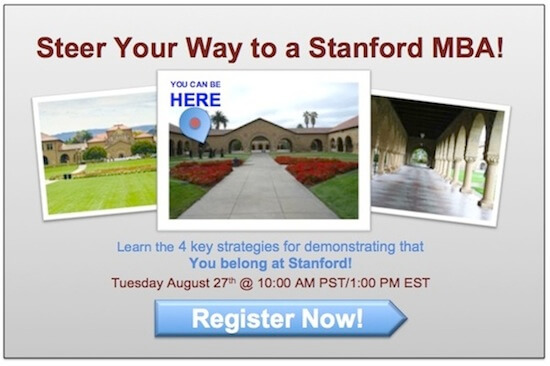 Of course Stanford GSB seeks demonstrated leadership potential – don’t all b-schools? And naturally you’ve got leadership, or you wouldn’t be applying to Stanford.
Of course Stanford GSB seeks demonstrated leadership potential – don’t all b-schools? And naturally you’ve got leadership, or you wouldn’t be applying to Stanford.
Wait. There are some unique nuances to Stanford’s conception of leadership that are essential to understand in order to portray it effectively in your application. Let’s break the phrase down word by word, starting with the core principle.
Leadership. Principle? Yes, not just a quality or an activity in Stanford’s eyes, but an actual principle. Whatever change you’re guiding the client to achieve, or whatever vision you’re advocating, or whatever project you’re driving the team through Hades to complete on time – it should be constructive and beneficial according to your own values and ideals. In GSB’s view, leadership isn’t just rallying the troops to achieve a given end – it’s having an end worth achieving (and, conversely, declining to pursue an inappropriate end). Therefore, if you are to provide such leadership, you must have core values or ideals and be guided by them as you lead, both how you lead and where you lead. GSB’s preferred leadership is essentially value- and ideal-driven, what it calls “directed idealism.”
Potential. Even if you are already a leader per the above definition, you’re not satisfied. You know that improving will only enable you to achieve more of what you value – therefore you actively seek growth as a leader. You are open to critique and feedback, you are resourceful, you are humble, and you are hungry to learn.
Demonstrated. Concrete evidence that allows the adcom to conclude that you will grow as a leader and provide leadership in the future. You must demonstrate both leadership and potential to grow as a leader. For the former, provide this evidence by portraying experiences in your application boxes, essays, resume, and recommendations that reflect your leadership to date. For the latter, in these same application components frankly reflect on where you are in your leadership development – you understand what parts are innate to you, and where you need to improve.
So “demonstrated leadership potential” is actually rather complex, at least per GSB’s perspective of leadership. Plan to spend some time and effort on a strategy to integrate these points into your entire application.
 By Cindy Tokumitsu, author of numerous ebooks, articles, and special reports. Cindy has advised hundreds of successful applicants in her fifteen years with Accepted. She can help you assess your strengths and weaknesses and develop a winning MBA admissions strategy. She is a member of the Association of International Graduate Application Consultants.
By Cindy Tokumitsu, author of numerous ebooks, articles, and special reports. Cindy has advised hundreds of successful applicants in her fifteen years with Accepted. She can help you assess your strengths and weaknesses and develop a winning MBA admissions strategy. She is a member of the Association of International Graduate Application Consultants.
Accepted.com's experienced admissions consultants can help you create the most impressive application possible with comprehensive packages, or provide targeted assistance from picking perfect programs to designing a dazzling resume, constructing engaging essays, or preparing for intense interviews…and more! Accepted.com has guided thousands of applicants to acceptances at top MBA programs since 1994 – we know what works and what doesn't, so contact us to get started now!
This article originally appeared on the Accepted Admissions Consulting Blog, the official blog of Accepted.com.

